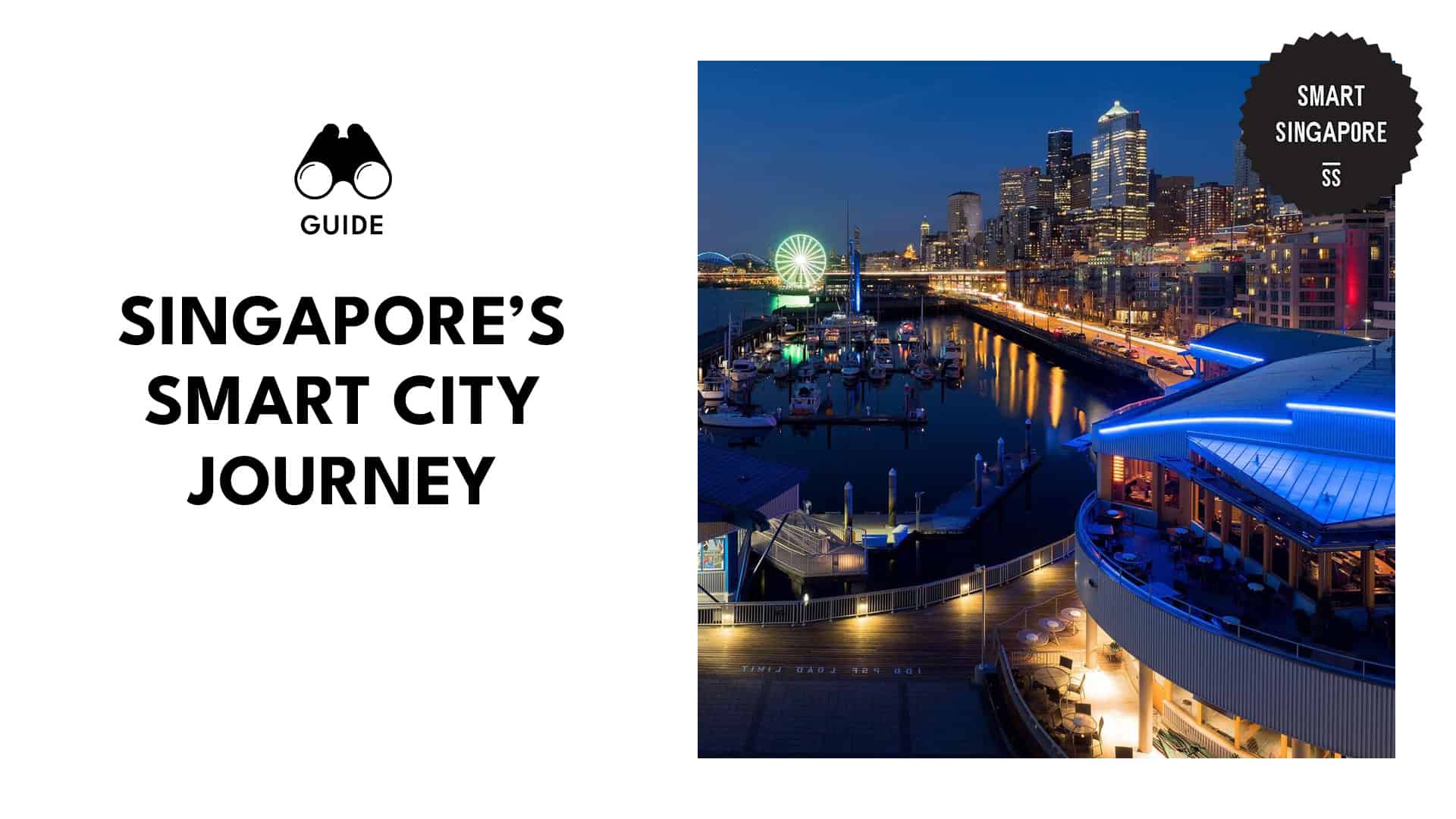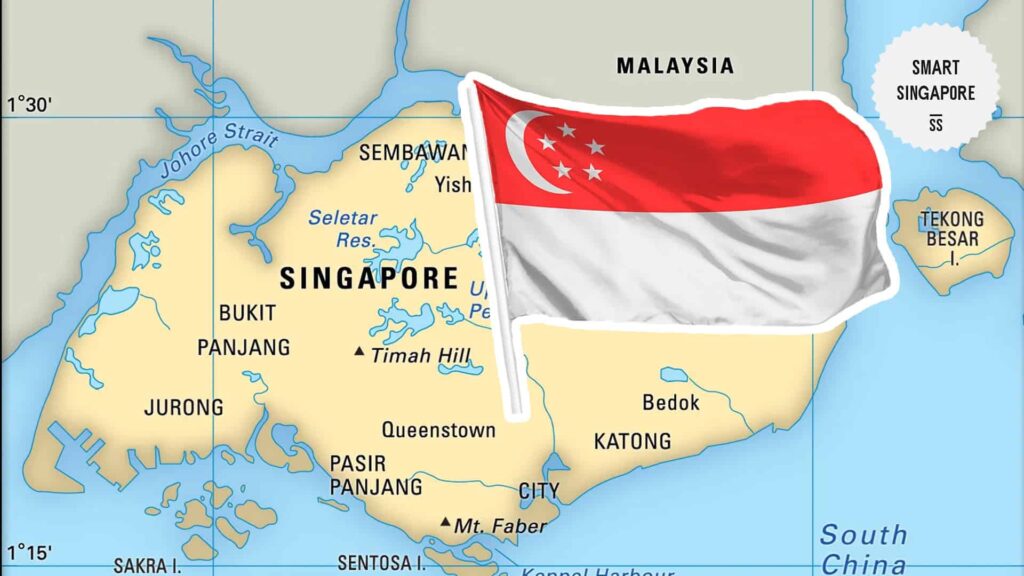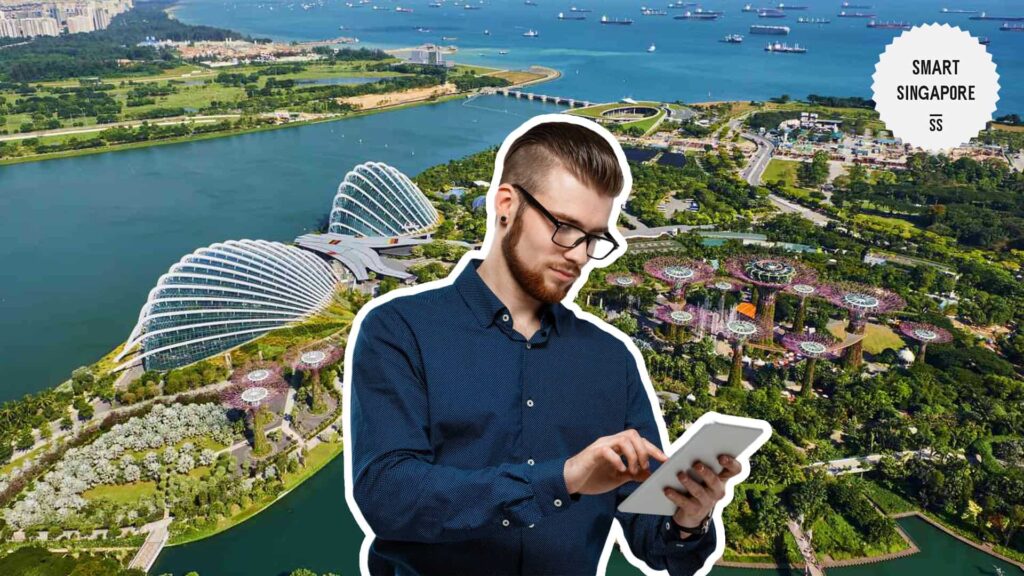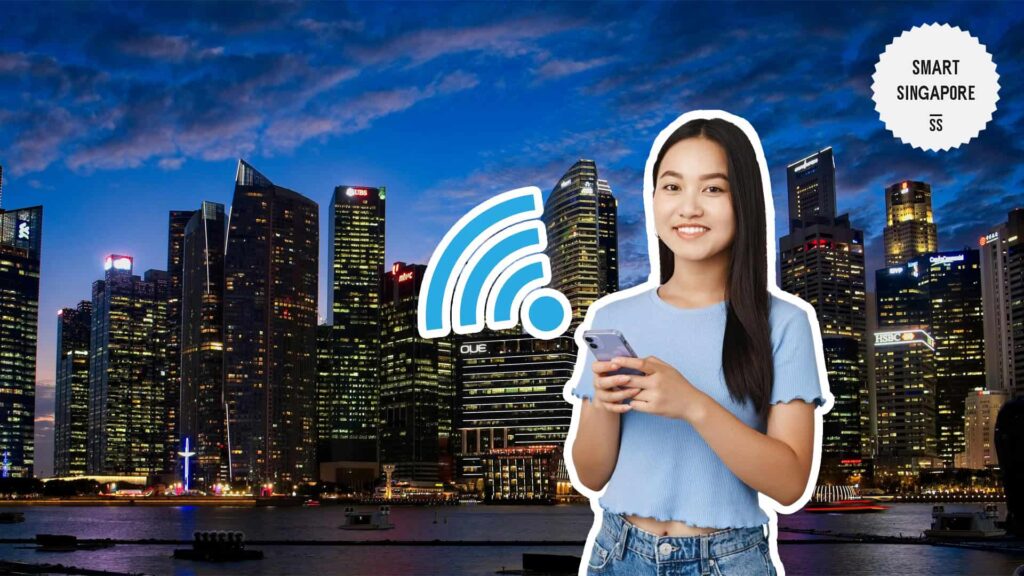Categories > Guides and Tips

Cracking the Code: Singapore’s Smart City Journey
According to the IMD Smart City Index, Singapore ranks as the 5th smartest city in the world in 2024, which is a two-place boost from the previous year’s 7th placemark.
But what does it mean to be a smart city? We’re not talking about how intelligent Singaporeans are but how Singapore became a smart city through their Smart Nation Plan and Initiatives.
As a smart city, Singapore relies on technology as a driving force for improvement in many of the nation’s sectors like finance, education, and health. If you want to know more about how Singapore was able to achieve that, read on further!
What does it mean to be a smart nation?

A smart nation uses technology and data-driven solutions to improve the quality of life of its inhabitants.
Singapore, for example, is considered a smart nation due to its heavy integration of technology in sectors like transport, finance, education, and health.
Smart nations have 7 key components:
- Data Collection
Smart nations create solutions by gathering data from devices and sensors. The data is then used to analyse patterns in energy consumption, traffic, and citizen engagement.
- Sustainable Infrastructure
Smart nations elevate their quality of life by building sustainable infrastructure. Smart nations integrate sustainability principles into designing and constructing buildings, homes, and commercial areas.
- Information and Communication Technology
Smart nations have a cutting-edge digital infrastructure that provides their citizens with ultra-fast Internet connection in public and private places. The cities also rely on these digital and wireless networks for data collection.
- Governance and Citizen Engagement
With wireless networks and an ultra-fast Internet connection, smart nations enable citizens to access online portals to process government services, communication platforms, and more conveniently.
Smart nations aim to enhance faster and more efficient communication between the government and its citizens.
- Safety and Security
Smart nations safeguard their citizens with the use of cutting-edge security and surveillance technology, including automated announcements.
- Improved Quality of Life
The use of technology in smart nations gives citizens an enhanced quality of life by constantly improving access to quality healthcare, resources for education, and digital platforms for cultural activities and participation.
- Smart Transport
Smart nations use technology to track traffic patterns, create smarter public transportation systems and hubs, and manage parking space solutions more efficiently.
What is Singapore’s Smart Nation Plan?

Launched in 2014, Singapore’s Smart Nation Plan is the country’s initiative to become a world-class, digital-first and tech-reliant nation.
Through the Smart Nation Plan, the Singaporean government aims to transform and improve how people work, live, and play.
This includes digitising government services, making public transportation safer and more convenient through digital solutions, creating more work opportunities, and improving economic productivity by boosting tech-driven businesses.
The Three Pillars of Singapore’s Smart Nation Plan

Singapore’s Smart Nation Plan encompasses three main pillars, namely digital economy, digital government, and digital society. These three pillars serve as the foundation of the initiative.
- Digital Economy
Singapore aims to achieve a digital economy by encouraging businesses to invest in newer technology and open more opportunities for young professionals to grow in their chosen careers.
- Digital Government
Singapore aims to achieve a digital government by investing and using technology to improve infrastructure and government services as well as develop better spaces for businesses to grow and thrive.
- Digital Society
Singapore aims to achieve a digital society by encouraging Singaporeans to use technology as a tool to cultivate their skills and learn new abilities that will help them succeed, and in turn, gain better job satisfaction and a better quality of life.
What are the Singapore Smart Nation Initiatives?

The Singapore Smart Nation Initiatives target five main domains, namely transport, finance, urban living, health, and education.
Each of these domains has core initiatives that the Smart Nation Plan aims to improve and implement first in order to achieve Smart Nation goals.
1. Transport

Under the Singapore Smart Nation Plan, the initiatives under the transport domain aim to significantly develop autonomous driving and smart parking.
Autonomous parking initiatives include investing in companies like A*STAR, ST Engineering, Gardens by the Bay, and nuTonomy. These companies have pioneered self-driving technology in Singapore in hopes of reducing accidents and traffic jams.
Smart parking initiatives aim to provide citizens with seamless parking solutions by notifying them of car park slots, parking ticket payments, and even refunds through their mobile phones.
This initiative also encourages businesses to implement smart parking systems wherein citizens can reserve parking slots and detect unauthorised parking.
2. Finance

In the finance domain, the Smart Nation Plan aims to develop more efficient and safer digital payment methods and schemes for small businesses like hawker centre stalls, canteens, and coffee shops.
This contactless or digital payment scheme will also be implemented in public transport wherein citizens can easily pay for rides using their phones or debit/credit cards with one tap.
The Smart Nation initiative in the finance domain also gave birth to the idea of the Smart Financial Centre, wherein bodies like the Monetary Authority of Singapore (MAS) launched programmes that encourage the use of technology in the finance industry.
3. Urban Living

Initiatives for urban living include using technology in the HDB Town Framework areas of planning, estate data, living, community, and environment. Plans like using smart lighting and digitised waste conveyance platforms will be implemented in these areas.
Another initiative is to use drones to control outbreaks of rampant diseases like dengue in HDB communities where a strong concentration of citizens lives within one area. This eliminates the need to send people to high-risk areas like dengue breeding grounds.
4. Health

In the health domain, the Smart Nation Plan aims to digitise health services like appointments.
Citizens can easily access medical help from the comfort of their own homes and set virtual appointments without the need to line up in hospitals and medical centres.
A solution that is already in place under this initiative is TeleRehab wherein patients wear sensors that help their therapists remotely monitor and facilitate rehabilitation sessions.
Another initiative that’s already running is HealthHub, a mobile application that enables citizens to access their health information and medical records through their mobile devices.
Through the app, they can also search for health institutions near them, as well as set appointments with doctors registered in the app.
5. Education

In the education domain, the Smart Nation Plan aims to make communication between parent and child more seamless and efficient by implementing mobile applications like Parents Gateway.
The application enables parents to track and receive school notifications as well as sign or give their consent to school activities. Teachers can also benefit from the app, as it lessens the administrative load and allows them to focus on teaching.
What are the benefits of a Smart Nation?

The benefits of a Smart Nation include better quality of life, more efficient public transport systems, easy and faster access to health and government services, and improved job satisfaction and work opportunities.
The initiatives currently in place since the plan’s launch in 2014 have significantly increased public satisfaction rates from 78% to 86%, based on surveys conducted in 2019.
Citizens now enjoy streamlined tracking and reporting of community concerns and developments through the OneService App, wherein they can send feedback and report nuances in their communities.
Singaporeans are now also able to conduct safer and more convenient authentication processes through the use of Singpass, a National Digital Identity system that allows citizens to safely authenticate online purchases and use digital signatures.
Simplified health tracking and management are now possible thanks to applications like Healthy365, HealthHub, myENV, and MyResponder, wherein citizens are notified in real-time of dengue clusters and given access to swift emergency assistance.





